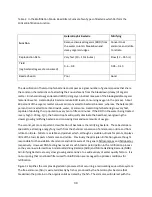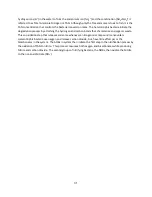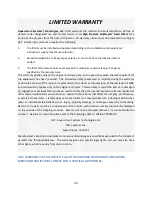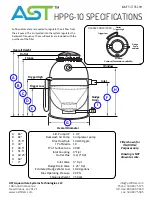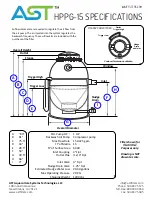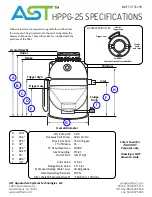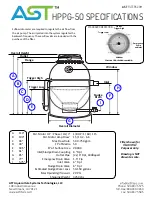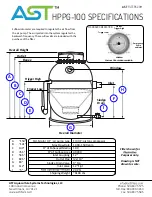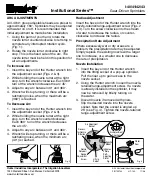
26
15
o
C is less than half of than at 30
o
C. During acclimation a few bacteria with the right characteristics for
your system must first attach to the media then reproduce through perhaps a hundred generations to
reach acclimation. So if you wish to acclimate in a hurry then heat your water to 30
0
C until the systems
then lower the temperature to the desired level for the fish. The bacteria culture will quickly adjust to
the lower temperature. And, remember that the characteristic drop in nitrite concentrations when it
occurs happens very quickly. It seems like the nitrites will never go down and then suddenly they do.
The initial acclimation assures that the biofilter contains the right type of bacteria. However, you then
must adjust the amount of bacteria to assure there are enough of them to process the ammonia
produced by the animals in the system. Therefore, the next step in the acclimation process is to
increase the density of animals in moderate steps allowing some time for the bacterial population to
grow to meet the increased demand. This process of acclimation to increased loading is normally
undertaken with the animals of choice, since the TAN and nitrite, peaks are small and quickly disappear.
As a general statement, an acclimated filter will completely adjust to a sudden increase in fish density
(or feed level) within 72 hours. If the step increase is moderate (< 33 percent of current load), the
acclimation will probably occur without noticeable peaks. The heights of the acclimation peaks are
actually controlled by the density of fish in the system, not by the size of the biofilter. That is, the nitrite
peak in a system with a fish density of 0.25 pounds/gallon will display a peak concentration one-half as
high as a system with a density of 0.5 pounds/gallon.
Table 4 summarizes additional methods that can be used to decrease transitional peaks. The process of
acclimation to increased loading occurs naturally if the bacteria and animals are allowed to grow
together. The bacteria always grow faster, maintaining the proper balance between the biofilm and the
animal density. For example, within a Koi pond, once the filter is acclimated to the fingerling density,
the biofilter's ecosystem will take over and maintain the proper balance. Your management
responsibility occurs when the natural growth processes are disrupted by sudden (unnatural) changes in
the system.
Table 4. Things that Can be Done to Decrease Transitional Peaks of TAN and Nitrite When the Animal
Density or Feed Rates are Increased
Procedure
How does it help?
1
Increase your water until the biofilter adjusts.
TAN and nitrite will be flushed with the
water.
2
Discontinue or reduce feed rate during the transition.
TAN excretion rates from most animals
increases with feeding.
3
Make loading increases in small increments (< 33 percent of
current load) and separate steps by about 3 days.
Existing bacteria will absorb most of the
increased load and reproduce rapidly.
4
Extend backwashing interval.
Decreases biofloc loss during the critical
transition.



















